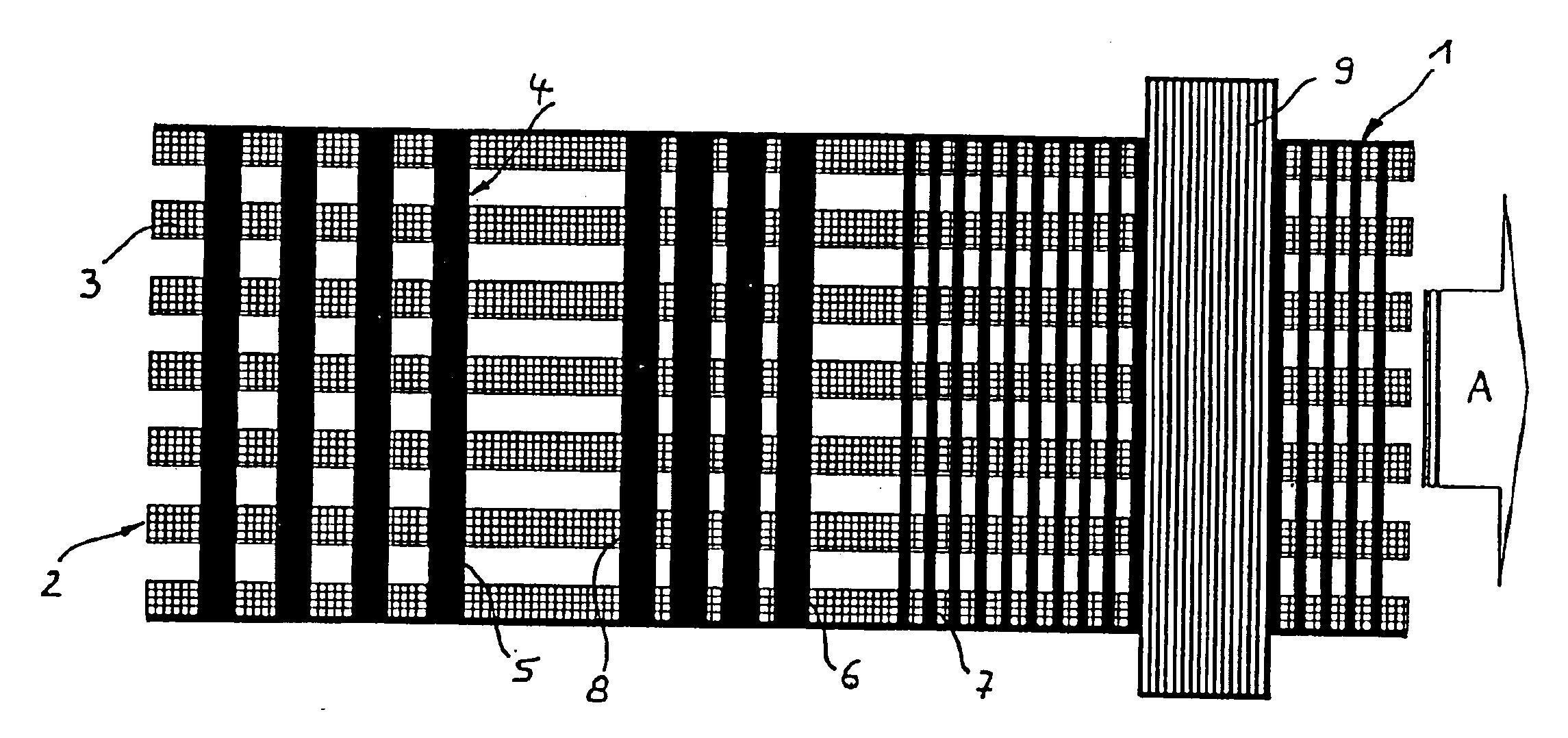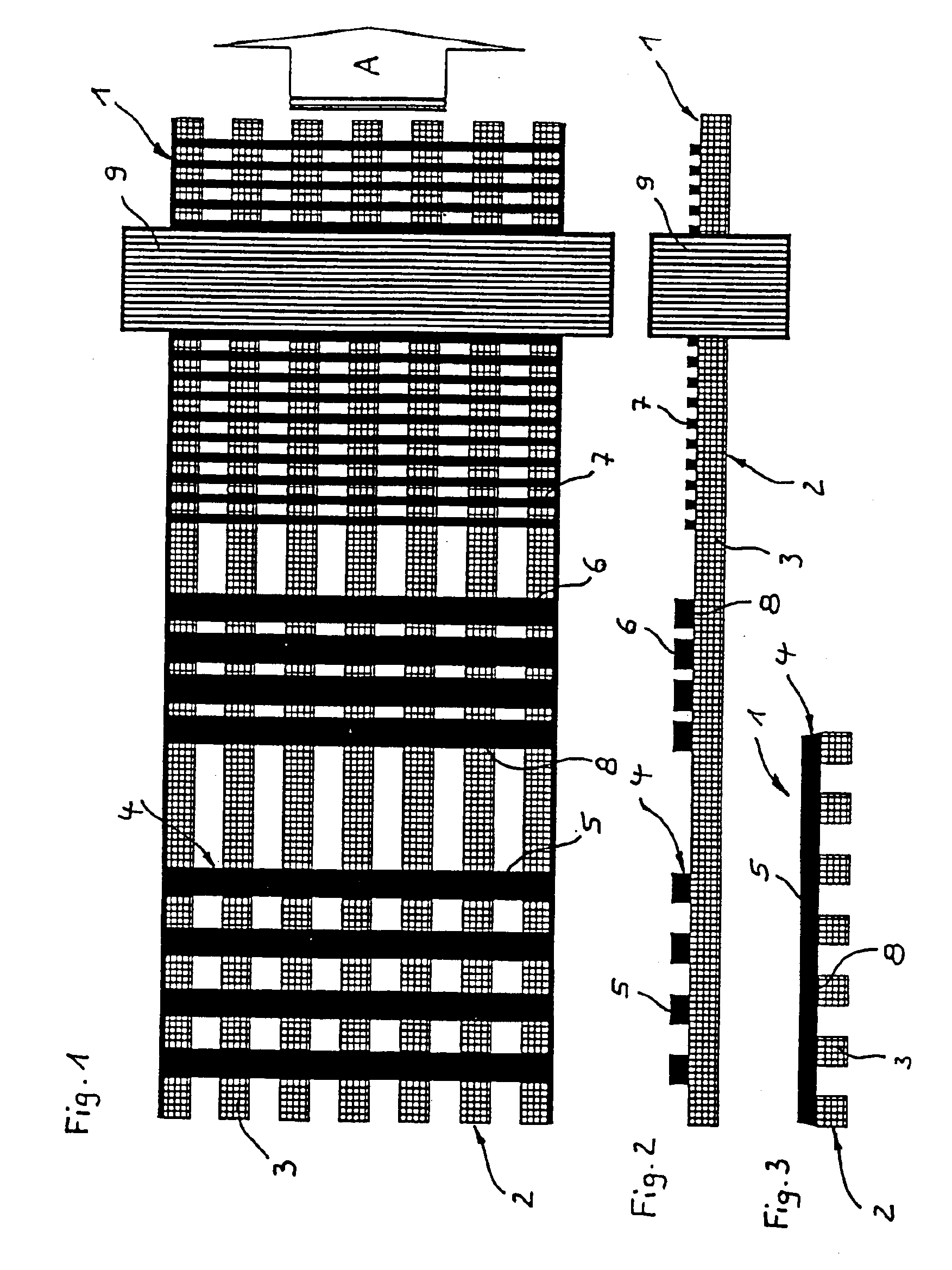Paper machine clothing and a method of producing the same
- Summary
- Abstract
- Description
- Claims
- Application Information
AI Technical Summary
Benefits of technology
Problems solved by technology
Method used
Image
Examples
Embodiment Construction
[0038]The paper machine clothing 1 illustrated in FIGS. 1 to 3 consists of a filament lay-up, the lower layer 2 of which is formed by longitudinal filaments—denoted by 3, for example. As can be seen in particular from FIG. 3, the longitudinal filaments 3 have a rectangular cross-section and are at identical spacings from each other. For the production process, the left-hand ends of the longitudinal filaments are wound on a filament beam, which is not shown here. A second beam, which is likewise not shown here, but on which the finished paper machine clothing 1 is wound up, is provided on the right-hand side. The paper machine clothing 1 is moved in this direction (arrow A).
[0039]An upper layer 4 comprising mutually parallel transverse filaments—denoted by 5, 6, 7, for example—is laid on the lower layer 2. The transverse filaments 5 are disposed at a wide spacing which substantially corresponds to the spacing between the longitudinal filaments 3, whilst the transverse filaments 6 are...
PUM
| Property | Measurement | Unit |
|---|---|---|
| Width | aaaaa | aaaaa |
| Width | aaaaa | aaaaa |
| Width | aaaaa | aaaaa |
Abstract
Description
Claims
Application Information
 Login to View More
Login to View More - R&D
- Intellectual Property
- Life Sciences
- Materials
- Tech Scout
- Unparalleled Data Quality
- Higher Quality Content
- 60% Fewer Hallucinations
Browse by: Latest US Patents, China's latest patents, Technical Efficacy Thesaurus, Application Domain, Technology Topic, Popular Technical Reports.
© 2025 PatSnap. All rights reserved.Legal|Privacy policy|Modern Slavery Act Transparency Statement|Sitemap|About US| Contact US: help@patsnap.com



